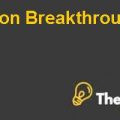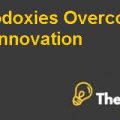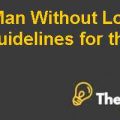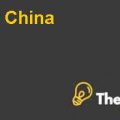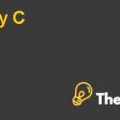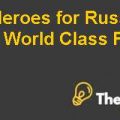
Innovation at the Lego Group (A) Case Solution
Introduction
Lego Group has remained a well-known toy company by 2003. It was founded in 1932 by Ole Kirk Christiansen. Lego was competing in the market with the innovation of technologies. Moreover, apart from the toys, it also deals in games, clothing, movies and the amusement parks.
By 1993, it continued towards expansion in toy lines with the different innovations as the castle and space themes advancement in the toys and creativity of mini-figure toy. Moreover, the geographical expansion of Lego was also preceded along its productlines.Its product line increases, however, the sales got stagnant and for the first time the company suffered a loss in 1998. The employees were laid off and the president of the company waschanged in order to regime the company’s profile. Due to a number of innovations in the toy range, Lego achieved tremendous sales growth in 2000. After 1998’s flaws the company surveyed and trapped the reason for the losses. Nonetheless, Lego came to know that the children moved towards video games leaving traditional toys. Hence, in between the years 2000 and 2002, Lego developed its new mission statement to become the world’s largest brand. However, this led Lego to modify its product line. In addition, Lego incorporated strategy of “Blue Ocean in the organization. Therefore, with the support of outside developers, Lego was able to formulate its product line towardselectronic toys. Apart from the toys range, Lego devised diversification towards the Themes parks and the Education center.Furthermore, Lego turned the business strategy of its toys from B2B business to B2C and developed its own toy stores for the direct selling.By the 2003, it followed differentstrategies for re–engineering its processes. It includedBlue Ocean Strategy with less competition in the market, Customer driven strategy, Outside the box thinking–Disruptive Innovations, Hiring of creative employees, Strategically use of all type of, Innovations, Followed Innovative culture, and Partnership with outside companies.
Lego invested in order to get success through its strategies. Consequently, the mass investment to the strategies led Lego towards drastic loss of $250 m in 2003. Hence, the report presented by Jorgen Vid Knudstrop for the loss and its factors made the board change the CEO of the company. Thus, Knudstrop was selected as the new CEO of the Lego. In order to bring the company out of the disastrous circumstances, the company formed 3 phases. The first phase was to deal with its cash flow and recovery of the debts.
Problem Identification
The company has invested a lot in innovation. Not only the toys but also it has diversified towards the range of Kids market as the Amusement parks, games, Education center etc. Due to this, Lego faced debt issues, whichled to the decline of its profit in the year 2003. The new CEO was appointed to the company in order to tackle the situation who formulated three phases which could mitigate the organization’s current situation. Hence, the first phase was to resolve the financial issues. Moreover, Lego needed to find the second and third phase to re-engineerthe strategies. The second phase was to formulate strategies which couldincrease the profit margin of the company. This phase included reducing channels which couldundermine the business of the Lego and are superfluous to the organizational activities.Furthermore, the third phase was to expand thecompany through new ways of innovations in order to develop the company’svalues.
Case Analysis
Porters Five Forces
Bargaining power of buyers
The bargaining power of the buyers of the toys industry is expected to be high. The buyers do not find the switching cost in the industry as there is no good substitute for the products.............
This is just a sample partial case solution. Please place the order on the website to order your own originally done case solution.

